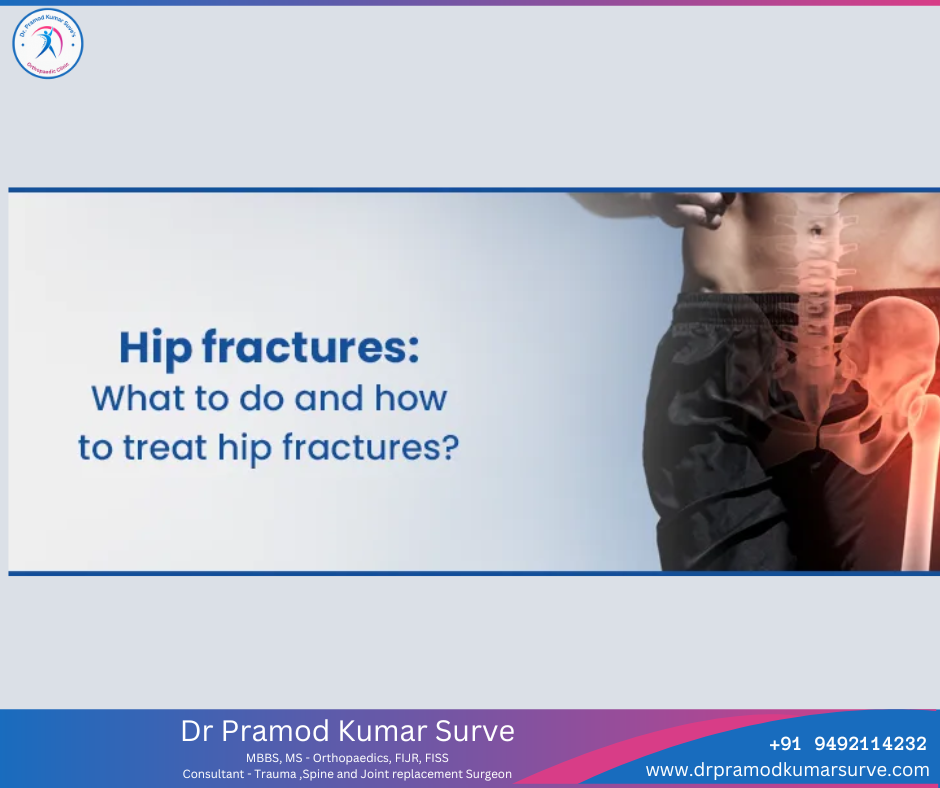Contributing Factors
Several factors contribute to the occurrence of hip fractures:
- Osteoporosis: Individuals with weakened bones, often due to osteoporosis, are more susceptible to hip fractures. Osteoporosis reduces bone density, making bones more fragile and prone to fracture.
- Falls: Falls are a significant cause of hip fractures, particularly among older adults. Environmental hazards, balance issues, and certain medical conditions can increase the risk of falls.
- Gender: As mentioned earlier, women have a higher risk of hip fractures than men. This is partially attributed to hormonal changes during menopause that affect bone health.
- Age: The risk of hip fracture increases significantly with age. Fractures become more common as bones lose density and strength over time.
- Chronic Health Conditions: Certain medical conditions like Parkinson’s disease, dementia, and cardiovascular issues can increase the risk of falls and contribute to hip fractures.
What to do if you suspect a hip fracture
For hip fractures, immediate medical attention and proper care are crucial. Here’s what to do if you suspect a hip fracture:
- Call for Help: If you or someone else experiences a fall or impact that could result in a hip fracture, call for emergency medical assistance immediately.
- Minimize Movement: Avoid moving the injured person unless necessary to prevent further injury.
- Keep Warm: Cover the person with a blanket to keep them warm, as shock can accompany severe injuries.
- Elevate Legs: If possible, elevate the legs slightly to reduce swelling, but be cautious not to cause discomfort.
- Provide Support: Use cushions, pillows, or rolled-up blankets to support the injured hip and provide comfort while awaiting medical help.
- Do Not Attempt to Walk: Walking or putting weight on a potentially fractured hip can worsen the injury. Encourage the injured person to remain still.
- Refrain from Giving Food or Drink: While awaiting medical assistance, avoid giving the injured person food or drink in case they need surgery or anaesthesia.
Types of Hip Fractures
- Intracapsular Fracture: This fracture occurs within the femur bone’s “neck” or head. It is commonly associated with older individuals and can notably affect the blood supply to the bones. This, in turn, can influence the healing process and recovery.
- Intertrochanteric Fracture: Positioned between the greater and lesser trochanters—bony projections on the femur—this fracture type affects a broader age range. It is often associated with high-energy trauma and may require surgical intervention.
- Subtrochanteric Fracture: Located just below the lesser trochanter and extending into the shaft of the femur, this fracture is less frequent but poses additional challenges due to its location. Treatment approaches may vary based on the complexity of the fracture.
How to treat hip fractures
The treatment of hip fractures often involves medical intervention and surgery, followed by rehabilitation. Here’s an overview of how hip fractures are typically treated:
- Medical Evaluation: Upon arriving at the hospital, medical professionals will conduct a thorough examination, including X-rays or other imaging tests, to determine the type and severity of the hip fracture.
- Surgical Intervention: Surgery may be recommended depending on the type of fracture and the patient’s overall health. Surgical options include:
- Hip pinning (internal fixation) involves placing screws, pins, or rods to stabilize the fracture. It’s commonly used for certain types of fractures.
- Hip Replacement (Arthroplasty): In more severe cases, partial or total hip replacement may be necessary, replacing damaged parts with artificial components.
- Intramedullary Nailing: A rod is inserted into the femur bone to stabilize the fracture, often used for specific types of fractures.
- Post-Surgery Care: Patients will be closely monitored in the hospital after surgery. Pain management, infection prevention, and mobility assistance are crucial during this period.
- Rehabilitation: Physical therapy is a crucial aspect of recovery. It helps regain strength, mobility, and functional independence. Physical therapists design tailored exercises to promote healing.
- Mobility Assistance: During recovery, assistive devices like crutches or walkers may aid mobility and prevent putting weight on the injured leg.
- Pain Management: Pain medications are prescribed to manage post-operative discomfort and aid rehabilitation.
- Monitoring and Follow-Up: Regular follow-up appointments with the medical team are essential to track progress, ensure proper healing, and make any necessary adjustments to the treatment plan.
Our Esteemed Orthopedic Specialist for Hip Fractures
At Dr. Prmaod kumar Hospital, we recognize the critical importance of specialized care in managing hip bone fractures. Our dedicated team of orthopedic specialists is committed to providing exceptional expertise to individuals facing this intricate condition. With a deep understanding of hip fractures and extensive experience, our specialists offer unwavering support throughout your healing journey.
Conclusion
In conclusion, hip bone fractures are severe injuries requiring immediate attention. They are often seen in older adults, especially those with osteoporosis. Contributing factors include osteoporosis, falls, age, gender, and underlying health conditions—surgical options like hip pinning, hip replacement, and intramedullary nailing address different fracture types. Collaborative medical care and rehabilitation are essential for adequate recovery and an improved quality of life.
